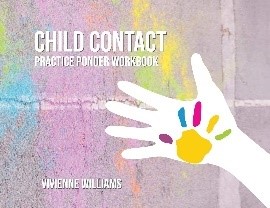What is it?
Family time arrangements (previously known as family contact) involve the fostered child and their family members. There are different types of family contact:
- Direct contact – meetings between the child or young person and birth family members or significant others and includes phone calls, texts and emails. These arrangements are typically set in Court during care proceedings. This can be very frequent early in a child’s care journey but can change over time, including changing to from a supervised setting, e.g. contact centre, to a more natural environment such as meeting for a meal or activity e.g. bowling, park.
- Indirect contact – letters and cards through members of the birth family and/or significant others usually through a third party. This is most often used when children are in long-term care.

We will discuss direct contact here, such as face to face family time, which can be with any, or all, of the following:
- Parents
- siblings living elsewhere
- other relatives important to the child
- significant others who may have previously been involved in their care or there are plans for them to be in the future, e.g. previous foster carers
Why is it important?
The Fostering Network advises that “Contact has a role in keeping children up to date with information about their family and it can help young people to decide how they manage that relationship later on.” (The Fostering Network, 2024)
Whilst is not appropriate for all children to have contact with all family members, family time is very important. Face to face contact has different purposes that include:
- preparing a foster child for a return home
- maintaining relationships and connections within families
- assisting a child in grieving for losses entailed in separation
- supporting the development of identity
- providing professional help to a fostered child’s parents regarding how to respond to their child’s behaviour.
Whilst a positive for children and young people, family time can bring up strong feelings for them. Eleanor Johnson speaks about the importance of being able to maintain contact with her siblings in foster care (link in resources section below) for her and their wellbeing.
Who decides if a child in foster care will have family time?
Most family time arrangement, also known as family contact, is set in Court during care proceedings. When considering contact arrangements, the Court must prioritise the child’s welfare above all other considerations.
There are also regulations and guidance that fostering agencies adhere to that define the role contact can play in the health and wellbeing of children. Requirements are for fostering agencies and foster carers to actively promote contact between children and their families, unless this is against a child’s best interests.
For Children and Young People
If you have been told that you family contact or family time has been arranged for you but you are not sure what means. NACCC works with centres that provide family time centres, and explain here:
“Supervised contact is observed by trained professionals. Sometimes (but not always) this will happen in a contact centre. A contact centre is a place that is set up especially for you to see the people that are important to you, so it can be a great place to spend time with the people you love.
This form of contact is provided where it is assessed that there might be a higher risk or a greater need for support in a family’s situation. This is a really common type of contact for children who live in care.
Observations will be made, and reports will be written. It is generally expected that staff will remain within sight and sound of children at all times.
Once you have been having this service for a little while, people might decide it is possible for you to spend time with the people you care about away from the contact centre (or the usual place where you have contact). For example, it might be possible for you to have contact in a public place, like a park or McDonalds.
The people offering contact will want you to feel safe and happy and will work with you to find a way to make this happen.” (NACCC, 2024).
How can you support your foster child with family time?
Your Supervising Social Worker will be able to guide you on ways to support your foster child with family time, however, here are some useful tips to remember:
- Speak positively about your foster child’s parents and relatives
Although difficult circumstances may have led to your foster child being placed in foster care, it’s important to focus on the positives. Highlighting the good aspects of their family can help strengthen the bond between the child and their family, aiding reunification efforts or improving relationships going forward. - Learn about your foster child’s family
Make an effort to learn about your foster child’s family. This knowledge not only provides conversation topics during scheduled meetings but also helps you relate better to your foster child. For example, if the child’s parent loves a particular genre of music, you might mention it to create a connection. - Monitor behavioural changes
It’s common for foster children to exhibit behavioural changes after visits with their birth parents. These visits can evoke feelings of disappointment, sadness, anger, and confusion. It’s crucial to report these changes to social workers and manage them carefully. Always validate the child’s feelings and support them in finding appropriate ways to express these emotions. - Prepare for visits
Opening lines of communication before visits is crucial. It allows the foster child to express their wishes and feelings beforehand. Don’t assume you know what your foster child is feeling – their emotions may change over time. Preparing for visits will differ for each child. Some children may benefit from knowing the date of the meeting in advance so they can prepare, while others may become anxious if they know too far in advance. Discuss with your child what works best for them. - Managing reunification
In many fostering placements, the goal is reunification, where the foster child returns to the care of their birth parents, family, or guardians. This is common in emergency or short-term placements. Reunification can bring mixed emotions for both the foster child and the foster parent. Your foster child may have reservations about being reunited with their birth parents, and you may find it difficult to say goodbye. It’s important to acknowledge these feelings and seek support from your Supervising Social Worker during this transition. - Handling birth family’s opinions
Many birth parents feel gratitude and respect towards foster parents for looking after their children. However, some may experience resentment and jealousy. As a foster parent, you’re trained to manage these interactions and ensure they do not affect the foster child. It’s essential for the child to see both their foster family and birth family as part of the same supportive team. Witnessing hostility can make them feel compelled to choose a side. Maintain a neutral and supportive stance, and seek guidance from your Supervising Social Worker if needed.
If you would like more information have a look at Connecting Carers NSW’s useful video (link in resource section below). Although is an Australian video and therefore some of the department names and terminology are different from the UK, it shows about the importance of contact, how to understand and support a child’s needs throughout the process, and some fun ideas to aid engagement and communication during the sessions, if appropriate.
 I hope that this has been helpful in providing more information about the importance of family time for children in foster care. Please have a look at the resource section below.
I hope that this has been helpful in providing more information about the importance of family time for children in foster care. Please have a look at the resource section below.
For more information or to discuss becoming a foster carer, please get in touch.
We look forward to speaking with you and helping you make a positive impact in a child’s life.
Get in contact 0345 222 0518 (Local Rate)
or request a call back via www.ukfostering.org.uk/#contact
By Lynsey Dobbs – Senior Recruitment Officer
Resources
Eleanor Johnson (2023) “My Experience in Foster Care – Contact With Siblings” Available at: https://www.youtube.com/watch?v=umhpE9xizYw Eleanor Johnson, My Experience in Foster Care – Contact With Siblings (accessed 19/06/2024)
Connecting Carers NSW (2015) “Understanding Contact” Available at: https://www.youtube.com/watch?v=oGb_mxxFtO8 (accessed 19/06/24)
 Child Contact Practice Ponder Workbook for Foster Carers
Child Contact Practice Ponder Workbook for Foster Carers
by Vivienne Williams
“As a foster carer, you no doubt would have been aware of the expectation that you play your part (where agreed) in ensuring the children you care for, have contact with their birth parents, family and significant friends. Foster carers are expected to support reasonable contact arrangements. Your role is imperative as these times are quite stressful for the children. It’s important that you are emotionally available for the children, to talk to and support before (sometimes during), and after transporting and escorting. The role you play will help in lessening the anxiety the child experiences. It’s also worth noting it’s often a stressful time for you; being well organised will help with this.
This workbook is for foster carers and any other childcare worker involved in child contact work. It aims to increase your knowledge, skills and provides you with a few useful tools in child contact. It’s a large workbook and my hope is that carers and other practitioners will work through it at their pace and complete exercises to enhance their practice and demonstrate continuing practice development.” (Review by Amazon.co.uk)
References
The Fostering Network (2024) “Contact in Foster Care” Available at: https://www.thefosteringnetwork.org.uk/policy-practice/practice-information/contact-in-foster-care (accessed 07/07/2024)
National Association of Child Contact Centres (NACCC) “Supervised Contact – Children and Young People” Available at: https://naccc.org.uk/supervised-contact-children-and-young-people/ (accessed 07/07/2024)
